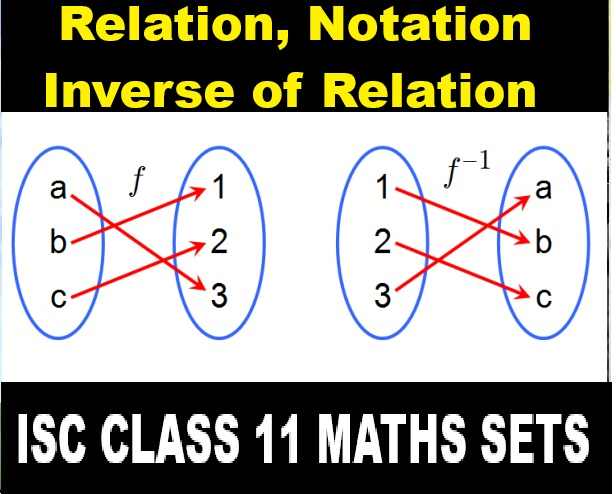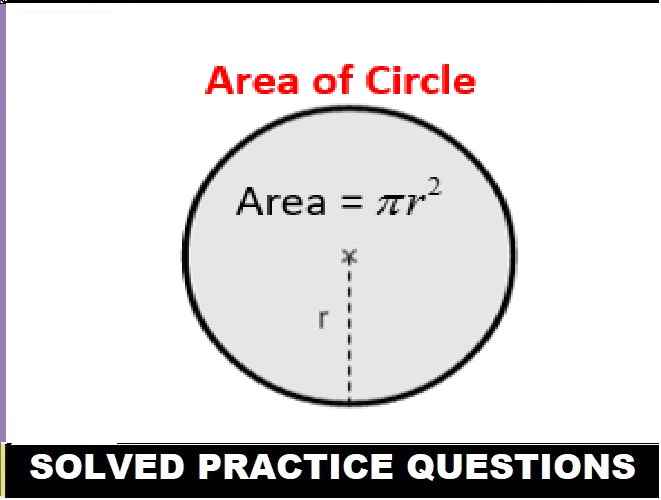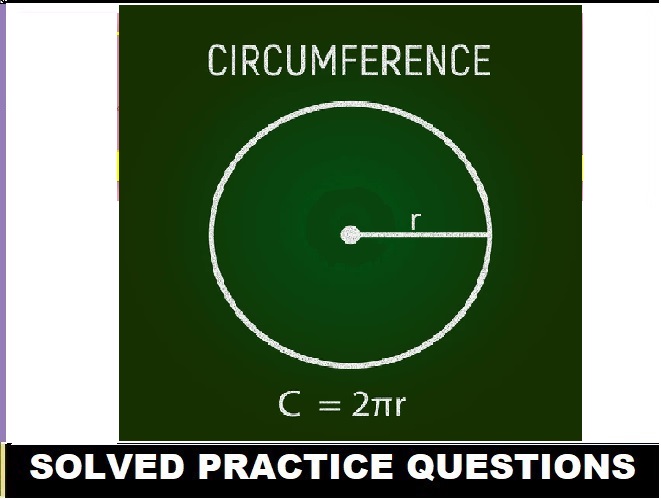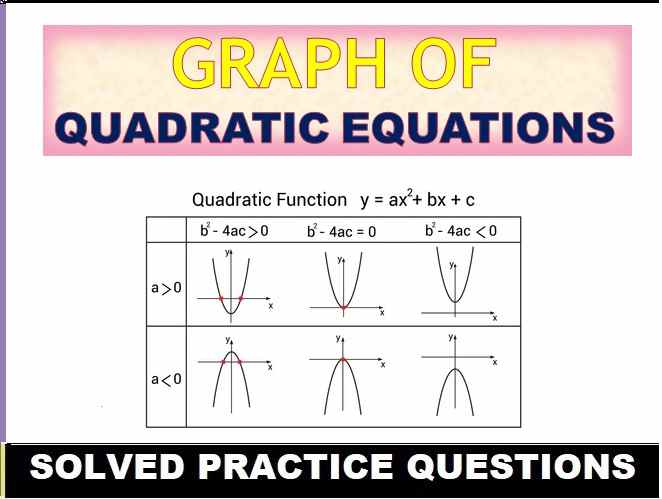Relations and Functions Class 11 OP Malhotra Exe-2B ISC Maths Solutions Ch-2 Solutions. In this article you would learn about Relation, Notation and Inverse of Relation. Step by step solutions of latest textbook has been given as latest syllabus. Visit official Website CISCE for detail information about ISC Board Class-11 Mathematics.

Relations and Functions Class 11 OP Malhotra Exe-2B ISC Maths Solutions Ch-2
| Board | ISC |
| Publications | S Chand |
| Subject | Maths |
| Class | 11th |
| Chapter-2 | Relations and Functions |
| Writer | OP Malhotra |
| Exe-2(B) | Relation, Notation and Inverse of Relation. |
Exercise-2B
Relations and Functions Class 11 OP Malhotra Exe-2B Solution.
Que-1: Write down the relation shown by the arrow diagram, by listing the ordered pairs. State the domain, co-domain, and the range of the relation.
Sol: Relation R is given by {{p, 3), (r, 5), (q, 5), (s, 7)}
∴ Domain of R = {p, q, r, s}
Range of R = {3, 5, 7}
Codomain of R = {1, 3, 5, 7, 9}
Que-2: The figure shows the relationship between the sets P and Q. Write the relation (i) in set builder form, (ii) in roster form. What are its domain and range?
Sol: P = {5, 6, 7} and Q = {3, 4, 5}
(i) R = {(x, y) : y = x – 2; x ∈ P}
or R = {(x, y) : y = x – 2, for x = 5, 6, 7}]
(ii) R = {(5, 3), (6, 4), (7, 5)}
The domain of a function is the set of all possible inputs for the function.
The range of a function is the set of all its outputs.
Domain of R = {5, 6, 7}
Range of R = {3, 4, 5}
Que-3: Which of the following are relations from B to A, where A = {a, b, c, d} and B = {x, y, z) ?
(i) {(z, x), (z, y), (x, a)}
(ii) {(z, a), (z, b), (z, c), (z, d)}
(iii) {(x, b), (y, a)}
(iv) {(b, y), (c, z), (a, x)}
(v) {(x, d), (y, c), (z, a)}
Sol: Given A = {a, b, c, d) and B = {x, y, z}
We know that a relation R from set A to set B is any subset of A x B i.e. RcAxB where A and B are non-empty sets.
(i) (z, x) ∈ R but z ∈B while x ∉ A. ∴ given set is not a relation from B to A
(ii) Yes, since in each ordered pair, first component belongs to B while second component belongs to A.
(iii) Yes, In ordered pair (x, b), x∈B and be A and in ordered pair (y, a), y ∈ B and a ∈ A
(iv) No, In ordered pair (b, y), b ∈ A and y ∈ B
while for relation from B to A, first component of each ordered pair ∈ B and second component ∈ A.
(v) Yes, since first component of each ordered pair belongs to B and second component of each ordered pair belongs to A.
Que-4: In each of the following, state which of the ordered pairs belong to the given relations ?
(i) {(x, y) : x > y + 5} ; (1, 0), (8, 2), (0,1), (2, 8), (9, 3), (10, 7), (123, 4)
(ii) {(x, y) : xy = 12} ; (3, 4), (4, 3), (12, 0), (0,12), (12, 1), (6, 2), (7, 5)
(iii) {(x, y) : y = (x+3)/(x−1), x≠1}; (0, 1), (2, 5), (5, 2), (3, 3), (7, 5), (7, (5/3))
Sol: (i) R = {(x, y), x > y + 5}
8 > 2+5, ∴ (8, 2) ∈ R
9 > 3+5, ∴ (9, 3) ∈ R
123 > 4+5, ∴ (123, 4) ∈ R
Hence, (8, 2), (9, 3), (123, 4) ∈ R
(ii) Given R = {(x, y) : xy = 12}
(3, 4) ∈ R ∴ 3×4 = 12
(4, 3) ∈ R ∴ 4×3 = 12
(12, 1) ∈ R ∴ 12×1 = 12
(6, 2) ∈ R ∴ 6×2 = 12
Hence, (3, 4), (4, 3), (12, 1), (6, 2) ∈ R
(iii) Given R = {(x, y) : y = (x+3)/(x−1), x≠1}
When x = 2 y = (2+3)/(2-1) = 5 ∴ (2, 5) ∈ R
When x = 0 y = (3)/(-1) = -3 ∴ (0, 3) ∈ R
When x = 5 y = (5+3)/(5-1) = 2 ∴ (5, 2) ∈ R
When x = 3 y = (3+3)/(3-1) = 3 ∴ (3, 3) ∈ R
When x = 7 y = (7+3)/(7-1) = 5/3 ∴ (7, (5/3)) ∈ R
Hence, (2, 5), (0, 3), (5, 2), (3, 3), (7, (5/3)) ∈ R
Que-5: Let N be the set of natural numbers. Describe the following relations in words, giving their domain and the range.
(a) {(2, 1), (4, 2), (10, 5), (18, 9), (20, 10)}
(b) (3, 1) (6, 2), (15, 5)}
(c) {(1, 4), (5, 16), (7, 22), (12, 37)}
Sol: (a) Given R = {(2, 1), (4, 2), (10, 5), (18, 9), (20, 10)}
In given relation, in each ordered pair, first component is twice the second component
∴ R = {(x, y) : x = 2y, y ∈ {1,2, 5, 9, 10}}
Domain (R) = {2, 4, 10, 18, 20} and Range (R) = {1, 2, 5, 9, 10}
(b) In given relation R, first component is 3 times the second component in each ordered pair.
∴ R= {(x, y) : x = 3y, y ∈ {1, 2, 5})
Domain (R) = {3, 6, 15} and Range (R) = {1, 2, 5}
(c) Clearly in given relation R, second component of each ordered pair one more than thrice the first component.
∴ R= {(x, y) : y = 3y + 1, x ∈ {1, 5, 7, 12}}
Domain of R = {1, 5, 7, 12} and Range (R) = {4, 16, 22, 37}
Que-6: Z is the set of integers. Describe the following relation in set builder form, given its domain and range.
{(0, – 7), (2, – 5), (4, – 3), (- 13, – 20), …}
Sol: In given relation, we observe that, difference between first and second component of each ordered pairs is 7.
∴ In set builder form, R = {(x, y) ; x – y = 7, x ∈ Z}
Thus domain of R = {0, 2, 4, – 13, ….} and Range of R = {- 7, – 5, – 3, – 20, ….}
Que-7: Write down the domain and range of the relation
(i) (x, y) : x – 3y and x and y are natural numbers less than 10.
(ii) R = {(x,y) : x, y ∈ W, x²+y² = 25}.
Sol: (i) Given relation R = {(x, y) ; x = 3y, x, y ∈ N, x, y < 10} given x = 3y, x, y ∈ N, x, y < 10
∴ x, y ∈ {1, 2, 3, 4, 5, 6, 7, 8, 9}
When y = 1 ⇒ x = 3 ∴ (3, 1) ∈ R
When y = 2 ⇒ x = 6 ∴ (6, 2) ∈ R
When y = 3 ⇒ x = 9 ∴ (9, 3) ∈ R
∴ R = {(3, 1), (6, 2), (9, 3)}
Thus, domain of R = {3, 6, 9} and Range of R = {1, 2, 3}
(ii) We have, R = {(x, y) : x, y ∈ W, x2 + y2 = 25}
= {(0, 5), (3, 4), (4, 3), (5, 0)}
Domain of R = Set of first element of ordered pairs in R
= {0, 3, 4, 5}
Range of R = Set of second element of ordered pairs in R
= {5, 4, 3, 0}
Que-8: Determine the domain and range of the relation R.
(a) R = {(x + 1, x + 5) | x ∈ {0, 1, 2, 3, 4, 5}}. Draw the graph of R.
(b) R = {(x, x³} | x is a prime number less than 10}.
(c) R = {(a,b) : a, b ∈ Z, a-b is an integer}
(d) R = {(x,x+5) : x ∈ {0, 1, 2, 3, 4, 5}}
Sol: (a) Given R = {(x + 1, x + 5 | x ∈ {0, 1,2, 3, 4, 5}} given x ∈ {0, 1,2, 3, 4, 5}
When x =0 ; (0 + 1, 0 + 5) i.e. (1, 5) ∈ {R}
When x = 1 ; (1 + 1, 1 + 5) i.e. (2, 6) ∈ {R}
When x = 2 ; (2 + 1, 2 + 5) i.e. (3, 7) ∈ {R}
When x = 3 ; (3 + 1, 3 + 5) i.e. (4, 8) ∈ {R}
When x = 4 ; (4 + 1, 4 + 5) i.e. (5, 9) ∈ {R}
When x = 5 ; (5 + 1, 5 + 5) i.e. (6, 10) ∈ {R}
∴ R = {(1, 5), (2, 6), (3, 7), (4, 8), (5, 9), (6, 10)}
Domain (R) = {1, 2, 3, 4, 5, 6} and Range (R) = {5, 6, 7, 8, 9, 10}
(b) (b) Given R = {(x, x³) | x is a prime number < 10}
Since x is a prime number < 10 ∴ x = 2, 3, 5, 7
When x = 2, (2, 2³) i.e. (2, 8) ∈ R
When x = 3, (3, 3³) i.e. (3, 27) ∈ R
When x = 4, (4, 4³) i.e. (4, 64) ∈ R
When x = 5, (5, 5³) i.e. (5, 125) ∈ R
∴ R = {(2, 8), (3, 27), (5, 64), (5, 125)}
domain (R) = (2, 3, 4, 5} and Range (R) = {8, 27, 64, 125}
(c) R = {(a, b): a, b ∈ Z, a – b is an integer}
If a, b ∈ Z, then a – b ∈ Z
=> Every ordered pair of integers is contained in R.
R ={(a, b) : a, b ∈ Z}
So, Range of R = Domain of R = Z.
(d) It is given that
R = {(x, x + 5) : x ∈ {0,1, 2, 3, 4, 5}}
Therefore, R = {(0, 5), (1, 6), (2, 7), (3, 8), (4, 9), (5, 10)}
The domain of a function is the set of all possible inputs for the function.
The range of a function is the set of all its outputs.
Hence,
Domain of R = {0, 1, 2, 3, 4, 5}
Range of R = {5, 6, 7, 8, 9, 10}
Que-9: Given A = {- 2, – 1, 0, 1, 2}, list the ordered pairs determined by each of the following relations applied on A :
(i) R1 = “is less than”
(ii) R2 = “is the square of”
(iii) R3 = “is the additive inverse of”
(iv) R4 = “is equal to”
Sol: Given A = {-2,- 1,0, 1,2}
(i) R1 = {(a, b) | a < b, a, b ∈ A}
since
– 2 < – 1 (-2,-1) ∈ R1
– 2 < 0 ∴ (- 2, 0) ∈ R1
– 2 < 1 ∴ (-2, 1) ∈ R1
– 2 < 2 ∴ (- 2, 2) ∈ R1
– 1 < o ∴ (- 1, 0) ∈ R1
– 1 < 1 ∴ (- 1, 1) ∈ R1
– 1 < 2 ∴ (- 1, 2) ∈ R1
0 < 1 ∴ (0, 1) ∈ R1
0 < 2 ∴ (0, 2) ∈ R1
1 < 2 ∴ (1, 2) ∈ R1
Thus R1 = {(- 2, – 1), (- 2, 0), (-2, 1), (- 2, 2), (-1, 0), (-1, 1), (-1, 2), (0, 1), (0, 2), (1, 2)}
(ii) R2 = {(a, b) | a = b², a, b ∈ A}
since
1 = (- 1)² ∴ (1, – 1) ∈ R2
1 = 1² ∴ (1, 1) ∈ R2
0 = 0² ∴ (0, 0) ∈ R2
Thus, R2 = {(1, – 1), (1, 1), (0, 0)}
(iii) R3 = {(a, b) | a is the additive inverse of 6}b
We know that – a be the additive inverse of a i.e. R3 = {(a, b) | a + b = 0, a, b ∈ A}
since
2 + (- 2) = 0 ⇒ (2, – 2) ∈ R3
– 2 + (2) = 0 ⇒ (- 2, 2) ∈ R3
1 + (- 1) = 0 ⇒ (1, – 1) ∈ R3
-1 + 1=0 ⇒ (-1, 1) ∈ R3
0 + 0 = 0 ⇒ (0,0) ∈ R3
Thus, R3 = {(2, – 2), (- 2, 2), (- 1, 1), (1, – 1), (0, 0)}
(iv) R4 = {(a, b) | a = b, a, b ∈ A}
since
1 = 1 ∴ (1, 1) ∈ R4
2 = 2 ∴ (2, 2) ∈ R4
0 = 0 ∴ (0,0) ∈ R4
– 1 = – 1 ∴ (- 1, – 1) ∈ R4
– 2 = – 2 ∴ (- 2, – 2) ∈ R4
Thus R4 = {(2, 2), (1, 1), (0, 0), (- 1, – 1), (- 2, – 2)}
Que-10: Given A = {2, 3, 4, 5, 6}. List the elements of each of the following relations :
(i) {(x, y) ∈ A x A : x = y}
(ii) {(x, y) ∈ A x A : x > y, (x/y) ∉ W}
(iii) {(x, y) ∈ A x A : x is a divisor of y and x ≠ y}.Given A = {2, 3, 4, 5, 6}
(i) Given R = {(x, y) ∈ A x A : x = y}
since (x, y) ∈ A x A, where x = y
∴ (2, 2), (3, 3), (4, 4), (5, 5), (6, 6) ∈ R
Thus R = {(2, 2), (3, 3), (4, 4), (5, 5), (6, 6)}
(ii) Given R = {(x, y) ∈ A x A : x > y,
Clearly 3 > 2, 3/2 ∉ R ∴ (3,2) ∈ R
Clearly 5 > 2, 5/2 ∉ R ∴ (5,2) ∈ R
Clearly 4 > 3, 4/3 ∉ R ∴ (4,2) ∈ R
Clearly 5 > 4, 5/4 ∉ R ∴ (5,4) ∈ R
Clearly 5 > 3, 5/3 ∉ R ∴ (5,3) ∈ R
Clearly 6 > 4, 6/4 ∉ R ∴ (6,4) ∈ R
Clearly 6 > 5, 6/5 ∉ R ∴ (6,5) ∈ R
Therefore R = {(3, 2), (5, 2), (4, 3), (5, 4), (5, 3), (6, 4), (6, 5)}
(iii) Given R = {(x, y) ∈ A x A : x is a divisor of y and x ≠ y}
Since 2 is a divisor of 4 and 6
∴ (2, 4), (2, 6) ∈ R
Since 3 is a divisor of 6 (3, 6) ∈ R
Hence R = {(2, 4), (2, 6), (3, 6)}
Que-11: If R = {(x,y) | x and y are integers and x²+y² = 64} is a relation, then find the value of R.
Sol: We have,
R2 = {(x, y) | x and y are integers and x2 + y2 – 64}
So, we get,
x² = 0 and y² = 64 or x² = 64 and y² = 0
x = 0 and y = ±8 or x = ±8 and y = 0
Therefore, R2 = {(0, 8), (0, –8), (8, 0), (–8, 0)}
Que-12: (i) If A is the set of even natural numbers less than 8 and B is the set of prime numbers les than 7, then the number of relations from A to B is
(a) 29 (b) 9² (c) 3² (d) 29 – 1
(ii) Let A be a finite set. The number of relations on A where A has 3 elements are :
(a) 9 (b) 0.81 (c) 24.3 (d) 512
(iii) Let n (A) = p. Then the number of all relations on A is
(a) 2^P (b) 2p^1 (c) 2p² (d) None of these
Sol: (i) A = set of even natural numbers less than 8 = {2, 4, 6}
B = set of prime numbers less than 7 = {2, 3, 5}
∴ O (A) = 3 ; O (B) = 3
Thus, the no. of relations from A to B = 2^{O(A×B)} = 2^{O(A)×O(B)}
= 2^(3×3) = 2^9 = 512
(ii) Since A has 3 elements ∴ O (A) = 3
No. of relations on A = 2^O(A×A) = 2^{O(A)×O(A)}
= 2^(3×3) = 2^9 = 512
(iii) Given n(A) = p
∴ No. of relations on A = 2^{n( A×A)} = 2^{n( A)×n( A)}
= 2^(p×p) = 2^p²
–: End Relation and Functions Class 11 OP Malhotra Exe-2B ISC Math Ch-2 Solutions :–
Return to :- OP Malhotra ISC Class-11 S Chand Publication Maths Solutions
Thanks
Please share with your friends


